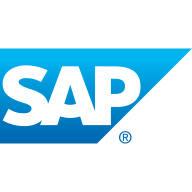

Informatica Intelligent Data Management Cloud (IDMC) and SAP Data Hub compete in data management and integration. IDMC seems to have the upper hand with its cloud-native capabilities and faster ROI, whereas SAP Data Hub is preferred for its alignment with SAP ecosystems and robust data orchestration.
Features: IDMC offers advanced data integration, AI-powered data quality, and flexible deployment options with a wide range of connectors and integration capabilities. SAP Data Hub provides efficient data orchestration, strong lineage, and governance features, making it suitable for organizations with significant SAP investments.
Ease of Deployment and Customer Service: Informatica provides a cloud-first approach with substantial customer support and resources for smooth deployment, designed for diverse environments. SAP Data Hub requires significant initial setup, benefiting those with existing SAP infrastructure but potentially needing longer integration times.
Pricing and ROI: Informatica IDMC offers a subscription-based model, appealing for predictable costs and scalable pricing as data volumes increase. SAP Data Hub might involve higher upfront costs but provides significant value for specific SAP use cases. IDMC tends to offer faster ROI with lower initial setup and cloud-native features, while SAP Data Hub's ROI is optimized for SAP-centric landscapes.

Informatica Intelligent Data Management Cloud (IDMC) is a robust platform used by banks, financial institutions, and health sector organizations for data management, governance, and compliance.
IDMC provides comprehensive tools for data discovery, profiling, masking, and transformation. It supports Salesforce integration, real-time data streaming, and scalable data management solutions. Health organizations manage national product catalogs while financial entities focus on data protection and regulatory compliance. Its intuitive interface, flexible features, and robust tools make it valuable across sectors, though enhancements in data integration and human workflow are being sought.
What are the most important features?
What benefits and ROI should be considered?
Banks and financial institutions use IDMC for data masking, transformation, and compliance, while health sector organizations leverage it for national product catalogs. Industry applications focus on automating business processes, centralizing data, and managing data catalogs to meet regulatory demands and ensure data protection.
The SAP® Data Hub solution enables sophisticated data operations management. It gives you the capability and flexibility to connect enterprise data and Big Data and gain a deep understanding of data and information processes across sources and systems throughout the distributed landscape. The unified solution provides visibility and control into data opportunities, integrating cloud and on-premise information and driving data agility and business value. Distributed processing power enables greater speed and efficiency.
We monitor all Data Governance reviews to prevent fraudulent reviews and keep review quality high. We do not post reviews by company employees or direct competitors. We validate each review for authenticity via cross-reference with LinkedIn, and personal follow-up with the reviewer when necessary.